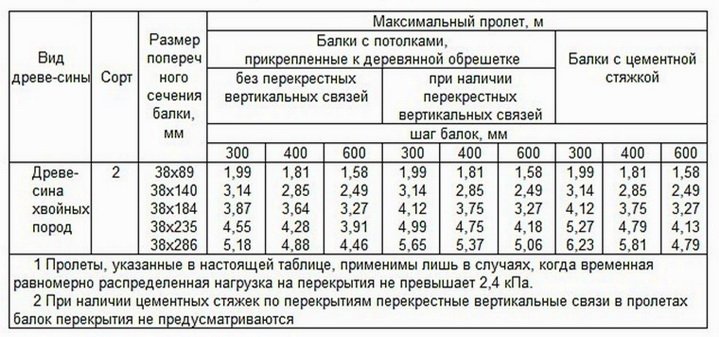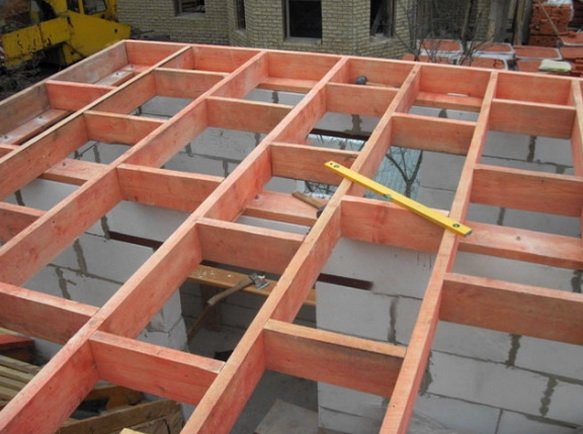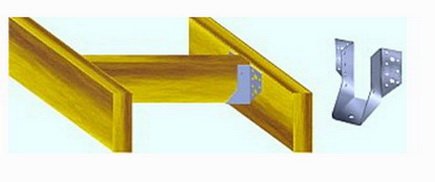The official name for the flooring installation procedure in wooden house- “organization and calculation of floors using wooden beams,” but we will look at this with humor as a solution to the “gender issue.” What is our future gender? These are horizontal house structures to divide the volume of the building vertically. Wow, how official it is! Simply put, what we will walk on and on which everything that we place in our wooden bathhouse or house will stand. This includes the floor itself (board or self-leveling or screed), decorative covering (in the form of laminate, parquet), furniture, and we are human beings who love to steam in a bathhouse that we build with our own hands. The price of this component of construction is 15-20% of the cost of the entire log house or house made of timber. A bit much, so consider the cheapest and most practical option.
In the small one-story version, we will only have basement floors (the role of the basement is played in our case) and an attic floor. This is also the ceiling in our bathhouse. Funny to look at during construction wooden bath concrete ceiling, so let's talk about wooden beams
In addition to the fact that a wooden base for floors is most suitable for us in terms of design, from an installation point of view, it is light in weight, convenient for transportation, and easy to process.
IN wooden log house the base of the floor is a beam. How to choose its size? How to calculate the load so as not to pay more than necessary and so that the ceilings do not fall on your head? The main thing is to select the required cross-section of the beam. Construction practice shows that the best aspect ratio when choosing a section is 1.4:1 - the height of the beam is 40-50% greater than the width. But these indicators are not a dogma, because There are many minor factors that influence the choice of sizes:
- floor span length;
- type of floor (basement, interfloor, attic);
- type of interfloor insulation between beams;
- maximum distance between beams (beam pitch).
Weight of insulation for winter temperature -20° C depending on thickness
| Minvata density up to 200 kg/m" |
Sawdust concrete or other insulation, density up to 300 kg/m3 |
Expanded clay or other insulation with a density of up to 500 kg/m3 | |||
| thickness, cm | weight of 1 m2 of insulation, kg | insulation thickness, cm | weight of 1 m2 of insulation, kg | insulation thickness, cm | weight 1 m2 insulation, kg |
| 9/7 | 18/14 | 12/9 | 36/27 | 18/13 | 90/65 |
In the numerator (before the fraction sign) - the value for the basement floor, and through the fraction - for the attic (ceiling) floor.
How to use the sign? (example: winter temperature - 20° C) determine that when using mineral wool The thickness of the insulation for the ceiling is 7 cm, and the weight of one meter of square insulation is 14 kg. When using expanded clay in the base, the thickness of the insulation is 18 cm, and the weight of one meter of square insulation is 90 kg.
These spreadsheet calculations are suitable for the construction of wooden residential buildings for permanent residence. And we are building a bathhouse for periodic use. Taking this into account, you can slightly reduce the parameters of the insulation thickness.
For wooden beams, a span of 3-4 m in length is considered optimal. This size does not lead to sagging ceilings. The distance between the beams is from 0.6 to 1 m. To determine the cross-section of the beam, it is necessary to calculate the total load per 1 square meter. m of flooring. This is the sum of the weight of the beam, floor, ceiling cladding - approximately 50-60 kg for interfloor slabs, and 20-30 kg for a pure ceiling slab, insulation weight (according to the previous table); payload weight for basement and interfloor slabs - 150 kg/sq.m. m, and for the basement - 75 kg/sq. m.). For the bathhouse ceiling there is no payload on top, because We do not plan to use the attic space and its weight is equal to the load of only the beams, insulation, sewing and, possibly, the raised floor between the attic and is approximately 20-30
For the calculation we started, let's calculate the cross-section of the beams for the bathhouse ceiling: Floor load weight = 14 kg (mineral wool) + 30 kg (clean ceiling) + 16 kg (reserve for various possible rubbish that usually lies under the roof) = 60 kg. Using the data in the table below, for a specific span you can calculate the cross-sectional size of the beams
Calculation of the minimum cross-section of rectangular floor beams with a distance between them of 0.5 m
| Length span, m |
||||||||||||
|
Height of beams with thickness, cm |
||||||||||||
(If the distance between the beams is more than 80 cm - up to 1 meter, then the calculations must be made in the same way, but the resulting height of the beam must be multiplied by K = 1.2)
For a load of 60 kg per square meter and a beam span length of 4 meters, with a distance between beams of 50 cm, a beam section of 5x16 is sufficient with a huge margin! Those. For floor beams, it is enough to select a board 40 mm thick and place them at a distance of 80-100 cm. In the plate, the minimum load per unit area is calculated for 150 kg. We have 60, due to the lack of load on the second floor. This is how complex the calculation of the “sexual issue” turned out to be. If you calculate floors using wooden beams based on the load on the floor, it will be necessary to take into account the additional useful load on the floor in addition to the weight of the beam structure itself, the floor and the insulation.
The attic floor must be strong enough to withstand the required load. The strength of the floor is influenced by several parameters that can be changed - the span, the cross-section of the beams, the pitch of their installation, the connections between the beams...
Let's take a closer look at how to choose attic floor beams for a private house, the method of their calculation, and design options.
Factors determining the load on the floor
The load on the attic floor is created by:- the weight of the ceiling itself;
- temporary operational load - people, loads that may be on the ceiling.
If screed and partitions are additionally used, then their specific gravity must be increased. Typically, when using dry screed and lightweight hollow interior partitions, the specific load from wooden floor and these structures are taken equal to at least 100 kg/m2.
Determining the load on the attic floor
The temporary operating load may vary depending on the purpose and use of the attic space.- If the premises are not used at all, then the specific operating load according to SNiP is taken to be at least 100 kg/m2. (75 kg x 1.3 - reliability coefficient).
Then the total specific load on the attic floor will be 100 + 50 = 150 kg/m2. - For interfloor slabs, the temporary operational load, according to the standards, must be at least 200 kg/sq. m (150 kg x 1.3).
If an unheated attic is supposed to serve as a warehouse for unnecessary things, then it is equivalent to an interfloor ceiling. - If the attic floor is residential, and a floor screed (floating floor with sound insulation) and light intersection partitions, furniture, equipment, etc. are used, then accordingly the interfloor ceiling
will have a total specific load of 300 kg/sq.m. (200 + 100 kg/sq.m.).
Determination of the section and installation pitch of beams
The initial data for the calculation were previously determined:- total specific load on the attic floor;
- the size of the span between load-bearing walls;
You can use the tables for selecting beams for attic floors, which are given in SP 31-105-2002 “Design and construction of energy-efficient single-family residential buildings with a wooden frame”,
For an unused attic, the following section of floor beams and their installation pitch are proposed, depending on the size of the floor. But here the temporary operating load is assumed to be 35 kg/m2. - This is a very rare visit to the attic by only one person. This ensures that the beam deflects no more than 1/360 of the span length.
The following table is for interfloor slabs with a specific load of 240 kg/m2. The maximum deflection of the beam is also provided for no more than 1/360 kg/sq. m.

There are also different calculation methods for designing beams, and at the amateur level various programs and calculators are used. You can see:
Additionally, read:

What connections should be used between beams made of boards?
If wooden boards are used as beams (no wider than 80 mm with a height of up to 250 mm), then measures must be taken to prevent the beams from twisting. It will be enough if the boards on top and bottom are sheathed (connected to each other) with a continuous flooring made of sheet rigid materials such as chipboard, CBPB, OSB, plywood... with a thickness of at least 12 mm, for a beam installation spacing of no more than 600 mm.Sheathing joints should be located in the center of the beams. The fastening of the skins is carried out with self-tapping screws in increments of 200 mm to a depth of 40 mm. 
The result will be a frame that not only prevents twisting, but also increases resistance to deflection and vibration.
On one side, the frame can also be formed by counter-lattice slats, which are installed perpendicular to the beams with a pitch of no more than 600 mm and a cross-section of at least 20X90 mm. The sheathing can be sheathed with less rigid material - gypsum fiber board, gypsum board.
If the upper continuous cladding of the beam-boards is not provided, and there is no counter-lattice, then the frame is strengthened with vertical struts. They are inserted between the beams and attached to them with metal corner elements, their cross-section is from 40X100 mm. The installation step of such connections is no more than 2.1 meters, but usually they are placed at the joints of the ceiling cladding, while the lower counter-lattice is not made.
When choosing boards for flooring, it should be taken into account that wide, even boards are more expensive than narrow ones (calculated per 1 cubic meter).
The height of the board (beam height) must be selected based on decision taken about the placement of the entire layer of insulation and the construction of counter-battens.
The pitch of the beams can be reduced based on the feasibility of fastening the sheathing, a multiple of the size of the sheets.
You can also find out
It is impossible to build a house without connecting elements - floors. They are the supporting foundation of each floor of the building. Even if the building is one-story, the ceilings serve as the ceiling and floor. The entire weight load falls on the floors. Things that are in the premises, people - all this load must be successfully carried. It should also be taken into account that with each additional floor the weight load on the underlying areas increases. This is why the correct calculation of floor beams is so important.
What are floor beams
Traditionally, wooden and reinforced concrete floors are used in houses. They represent a dividing plane between the floors of the building. Each of them is installed along the main load-bearing elements - floor beams. Their strength is very important. In addition to the load that the floor itself can withstand, the beams also take on the weight of the structure separating the floors itself.Rules for laying floor beams
If a brick building is being erected, then special holes are left in the walls for the construction of interfloor ceilings, which are prudently left during the laying of the walls. If the house is built of wood, then the holes into which the beams will subsequently be laid are simply cut down in the right places. The beams must be laid in such a way that the supporting length of the ends extends into the openings by at least 15 cm. The horizontalness of the laying is checked by a level or spirit level. To maintain the exact distance between the beams being installed, you can use a piece of lath of the required length. It will serve as an indicator of the distance through which the next beam should be installed. These supporting elements should be fastened every two beams. They are made using anchors. To align the beams horizontally in the openings in which they are laid, you can place wooden dies under their ends. We should not forget about insulation when carrying out this work. All the free space that remains in the openings after installing a beam in it. should be filled with insulation. Typically glass wool is used for these purposes. It is also important to do waterproofing. Therefore, pieces of roofing felt in two layers or dense polyethylene are laid in each opening. Beams can be positioned in both parallel and cross directions. But the latter is quite difficult to install and is rarely used in practice.

Calculation of floor beams
The basis for calculating the cross-section of the beam that will serve as a support beam is the following rule: the cross-section of the support must be at least 1/25 of its length. For example, if the length of the beam is 6 meters, then its thickness should be at least 25 cm. The shape of the room over which the ceiling is erected is often rectangular. It is more expedient to lay the beams in such a way that their length is as short as possible. That is, the support for their ends should be the openings in the longest walls of this room. For example, if its dimensions are 3/6 meters, then the beams should be installed three meters long. But this is a conditional figure, since it only indicates the width of the span. The beam itself should be 50-60 cm larger for the reason that it should rest on the walls at both ends by at least 25 cm. Next, in order to correctly calculate the floor beams, the weight load should be taken into account. For residential buildings its average value is 400 kg/m2
For an attic floor this value can be half as much. Next, the distance between the beams is included in the calculation. It can be 1 meter, 75 cm or something else. Optimal width span for wooden beams - 2.5-4 meters. The best beam shape is rectangular, with a beam height to width ratio of 1.4:1. Next, the maximum bending moment is calculated using a special formula. If the distance between the beams is 1 meter, then it will be 80000 kg/cm. There are special tables that show average indicators for certain types of wood, take into account the percentage of wood moisture content, its service life coefficient and many other indicators. All this can be found on specialized websites or in the literature on house construction. In the event that the joists will first rest on the floor beams, and then the boards, then the cross-section of the joists should also be calculated.
Read also:
Beam floors 
When choosing the type of flooring for a future home, the general concept of the structure is of great importance. It is unlikely that anyone would think of wooden cottage use a metal I-beam or reinforced concrete beam as a floor. There are certain rules and regulations that impose their own limitations on the design and make their own adjustments.
02/24/2013 at 13:02
Types of floors. Requirements for floors. 